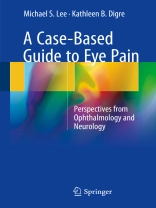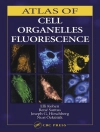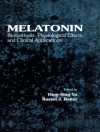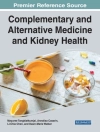Diagnosing a patient with unexplained ocular pain can be time-consuming and difficult, but taking an anatomic approach and excluding causes along the way can aid in the diagnosis. This book provides the reader with a systematic evaluation plan for these cases, written and edited by leaders in the field. A Case-Based Guide to Eye Pain is written for both ophthalmologists and neuro-ophthalmologists since there are not enough neuro-ophthalmologists to treat the number of patients with unexplained ocular pain and general ophthalmologists are having to take on the diagnosis and treatment of these patients.
Organized in an easy-to-use manner, each case covers the following key elements: the chief complaint, history of the present illness, the examination, assessment and plan, follow-up, alternate perspective, summary points, and key references. Tables are also available to help the reader rapidly sort through cases that may apply to a sign, symptom, historical feature, diagnostic test or treatment option. This allows the practitioner who has a patient with a particular concern to use the tables to identify a case discussion. Additionally, A Case-based Guide to Eye Pain includes an appendices with the general approach to eye pain and anatomy of the trigeminal pathway and its relation to eye pain.
Cuprins
PART 1 – Ophthalmic Disorders Causing Eye Pain: Relatively Normal Examination.- Case 1 Dry Eye Syndrome.- Case 2 Recurrent corneal erosions.- Case 3 Post-LASIK eye pain.- Case 4 Convergence insufficiency causing “eyestrain” eye pain.- Case 5 Intermittent angle closure glaucoma.- Case 6 Eye pain from Blepharospasm.- Case 7 Chalazion.- Case 8 Trochleitis or primary trochlear headache.- Case 9 Adenoid cystic carcinoma of the lacrimal gland.- Case 10 Posterior scleritis.- PART 2 – Ophthalmic Disorders Causing Eye Pain: Abnormal Eye Exam.- Case 11 Idiopathic orbital inflammatory syndrome (pseudotumor of the orbit).- Case 12 Anterior Uveitis.- Case 13 Conjunctivitis with medicamentosa.- Case 14 Thyroid Eye Disease.- Case 15 Orbital mass from granulomatoiss with polyangitis (aka Wegener’s).- Case 16 Ocular ischemic syndrome.- Case 17 Horner’s syndrome secondary to carotid artery dissection.- Case 18 Microvascular cranial neuropathy.- PART 3 – Neurologic Disorders Causing Eye Pain: Re
latively Normal Examination.- Case 19 Migraine with and without aura.- Case 20 Chronic migraine with medication overuse headache.- Case 21 Photophobia.- Case 22 Trigeminal neuralgia.- Case 23 Cervicogenic headache.- Case 24 Idiopathic stabbing headache.- Case 25 Sinus headache.- Case 26 Chronic tension type headache.- Case 27 Supraorbital neuralgia.- Case 28 Trigeminal autonomic cephalgias: Cluster Headache.-Case 29 Primary cough headache.- Case 30 Post-traumatic Eye Pain.- Case 31 Spontaneous Intracranial Hypotension.- Case 32 Giant Cell (Temporal) Arteritis.- Case 33 Thunderclap headache due to Reversible vasoconstriction syndrome.- PART 4 – Neurologic Disorders Causing Eye Pain: Abnormal Eye or Neurologic Exam.- Case 34 Meningitis tuberculosis meningitis.- Case 35 Optic neuritis.- Case 36 Idiopathic intracranial hypertension (pseudotumor cerebri).- Case 37 Low flow Cavernous-carotid fistula (dural cavernous fistula).- Case 38 Herpes Zoster Ophthalmicus.- Case 39 Tolosa Hunt Syndrome due to Metastatic adenocarcinoma to the cavernous sinus.- Case 40 Tolosa Hunt syndrome: Painful ophthalmoplegia.- Case 41 Pituitary Tumor.- Case 42 Aneurysm.- Case 43 Recurrent painful ophthalmoplegic neuropathy (ophthalmoplegic migraine).Despre autor
Michael Lee, MD, is Professor in the Department of Ophthalmology and Visual Neurosciences, Department of Neurosurgery, Department of Neurology, and is the Mackall-Scheie Research Chair in the Department of Ophthalmology and Visual Sciences at the University of Minnesota. He is also the Ophthalmology Residency Program Director, Co-Director for the Center for Thyroid Eye Disease, and Director of Neuro-ophthalmology at the University of Minnesota. Dr. Lee sees patients with a variety of neuro-ophthalmic problems, including blepharospasm, hemifacial spasm, optic neuritis, ischemic optic neuropathy, double vision, eye pain, pseudotumor cerebri, thyroid eye disease and giant cell arteritis.
Kathleen Digre, MD, is Professor, Neurology and Ophthalmology, Director of Neuro-ophthalmology Moran Eye Center, Director of Neuro-Ophthalmology Fellowship, and Director of Headache Clinic, at the University of Utah. She is also Adjunct Professor of Obstetr
ics and Gynecology and Adjunct Professor of Anesthesia.












